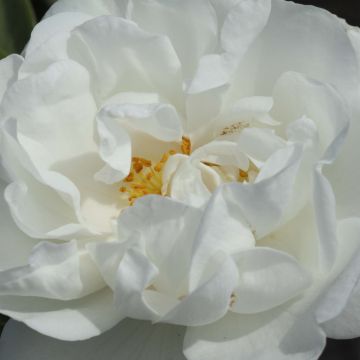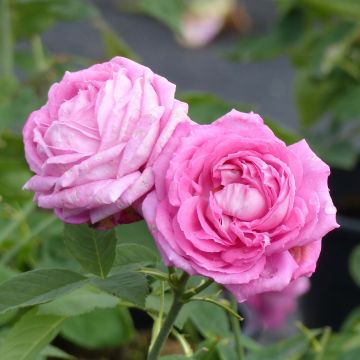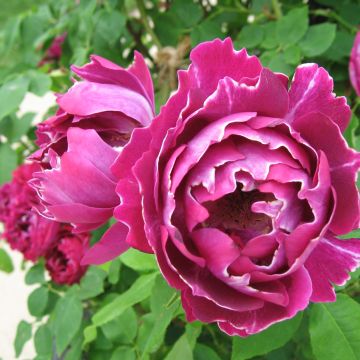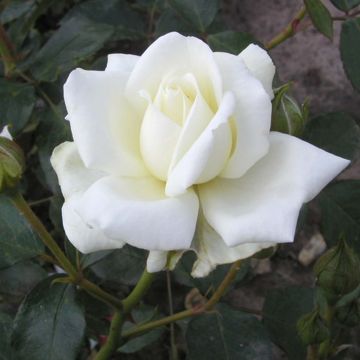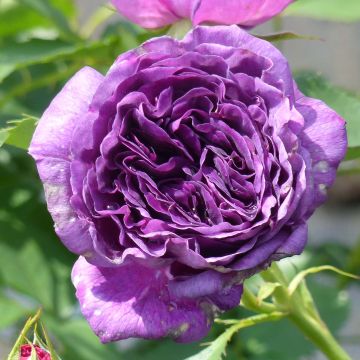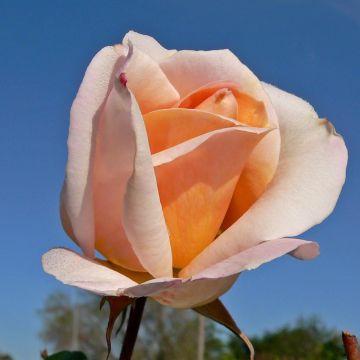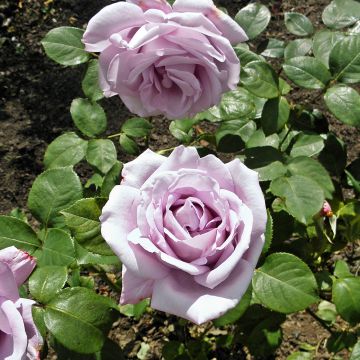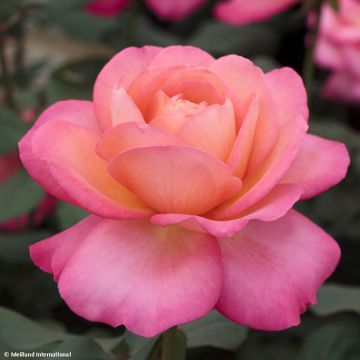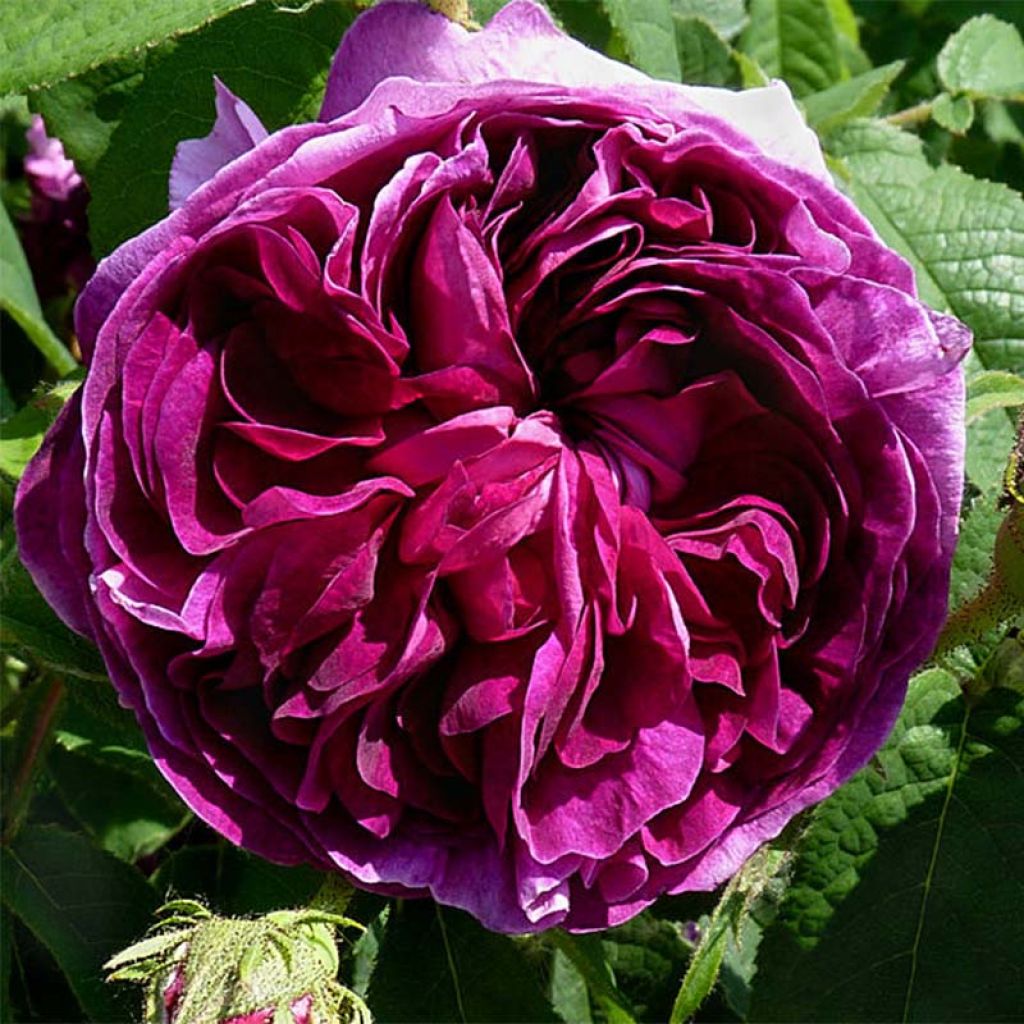

Rosa gallica Charles de Mills - Old Gallic Rose
Rosa gallica Charles de Mills - Old Gallic Rose
Rosa x gallica Charles de Mills
Old Gallic Rose
This item cannot be shipped to the selected country
Delivery charge from €5.90
Delivery charge from €5.90
Delivery to Corse prohibited
More information
Schedule delivery date,
and select date in basket
This plant carries a 24 months recovery warranty
More information
We guarantee the quality of our plants for a full growing cycle, and will replace at our expense any plant that fails to recover under normal climatic and planting conditions.
From €5.90 for pickup delivery and €6.90 for home delivery
Express home delivery from €8.90.
From €5.90 for pickup delivery and €6.90 for home delivery
Express home delivery from €8.90.
Delivery to Corse prohibited: UE law prohibits the import of this plant from mainland France to Corse as part of the fight against Xylella fastidiosa. Please accept our sincere apologies.
More information

Does this plant fit my garden?
Set up your Plantfit profile →
Description
The Charles de Mills Rose has somewhat uncertain origins but was already seen in gardens before 1811. It is one of those roses that can survive without help in old cemeteries for many generations of gardeners. This gallica rose is exceptionally vigorous and has a compact, bushy habit and dark and healthy foliage. Its clusters of large, flat, and very double roses are of a crimson red colour with hints of burgundy, sometimes brown. It blooms only once in summer but is abundant and has a pleasant scent of dark rose. If planted in deep, fertile garden soil, 'Charles de Mills' will keep its promises.
The Rosa (x) gallica Charles de Mills is an ancient horticultural cultivar that likely appeared before 1790, possibly in Holland. The French or Provins rose, also known as Rosa gallica, was celebrated by the Greek poet Anacreon in the 6th century BC and originated from central and southern Europe. It was undoubtedly brought to Gaul by the Roman conquest. All gallica roses are disease-resistant and undemanding bushes.
The 'Charles de Mills' rose has been honoured with an Award of Garden Merit in England due to its ornamental qualities and excellent garden performance. This sturdy, bushy shrub grows to a height of about 1.20 m (3 ft 11 in) in all directions and has a moderately fast growth rate. Its foliage is a dark green colour and is remarkably healthy. The roses bloom abundantly in June and July for several weeks, with flowers of a nice size reaching 10-12 cm (3.9 - 4.7 in) in diameter. They are grouped in numerous clusters and bloom on at least one-year-old branches. The flowers are fully double and relatively flat, with about 40 petals arranged in a spiral. The roses are organised in quarters in full bloom, sometimes revealing a small dark green heart. They are a mix of dark crimson red and burgundy, with violet and brown tones showing themselves at ripeness. The scent of the flowers is more or less pronounced, typical of an old rose. This variety develops lightly thorny branches.
Although often overlooked for newer repeat-flowering varieties, Gallica roses are vigorous plants with a rich history. Shrub varieties like 'Versicolor', 'Cardinal de Richelieu', and 'Charles de Mills' are often found standing guard in abandoned gardens and cemeteries, while many others have died. Despite its once-a-season flowering, Charles de Mills is far from being a sad plant with its velvety red-violet flowers that are rich and dark. It contributes to the vitality of summer-flowering shrub borders and landscaped hedges and looks great mixed with buddleias, abelias, or deutzias. It also complements perennial geraniums, phlox paniculata, dame's rocket, and purple toadflax in perennial beds. These qualities make us forget that it only flowers once and show that this beautiful rose deserves a spot in every rose lover's garden.
If you have enough space, English, Old or Shrub Roses are magnificent planted in groups of three plants. They will grow together to form 'one' opulent bush that will bloom generously.
Report an error about the product description
Rosa gallica Charles de Mills - Old Gallic Rose in pictures
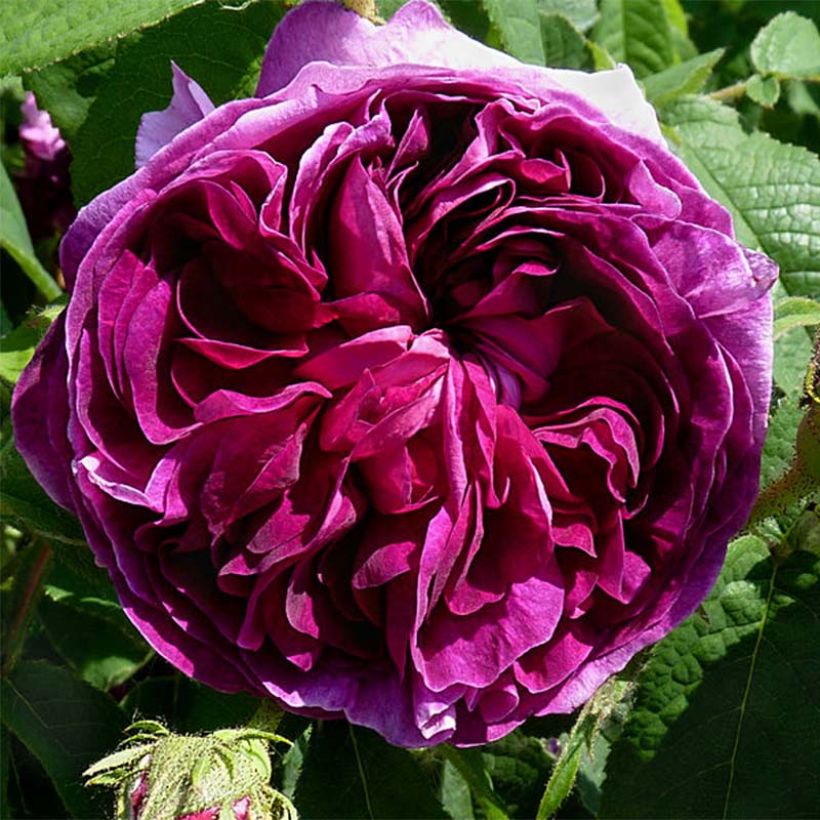

Plant habit
Flowering
Foliage
Botanical data
Rosa
x gallica
Charles de Mills
Rosaceae
Old Gallic Rose
Cultivar or hybrid
Rosa canina Laxa (Wrapped bare root)
Other Traditional Roses
Planting and care
To ensure healthy growth of your Charles de Mills Rose, you should plant it in a location that receives ample sunlight or is lightly shaded. Gallica roses can adapt to various soil types, but they do not thrive in soils that are excessively limestone-rich or highly acidic and poor in nutrients. Therefore, it is important to prepare the soil well in advance, make it adequately deep, not too heavy, and sufficiently rich in nutrients.
When planting the rose, dig a hole and add blood, fish, and bone at the bottom before covering it with soil. After planting, water generously to eliminate any air pockets. For the first two summers, especially if it is hot and dry, remember to water the plant regularly to encourage rooting
Gallica and old roses have deep root systems that can withstand water scarcity once established. Consider applying mulch to your flower beds to enrich the soil and limit water evaporation. In hot regions with intense sunlight, roses can get damaged and dry out if exposed to scorching heat. It's best to place them in partial shade or the morning sun and avoid planting them in the evening sun.
Pruning old roses mainly involves removing faded flowers as they appear unless you want to keep the decorative berries. It's best to avoid pruning to maintain an attractive, bushy shape. However, in late winter (March), you can remove branches in the middle of the bush that tend to suffocate it.
Planting period
Intended location
Care
-
, onOrder confirmed
Reply from on Promesse de fleurs
Fragrant Roses
Haven't found what you were looking for?
Hardiness is the lowest winter temperature a plant can endure without suffering serious damage or even dying. However, hardiness is affected by location (a sheltered area, such as a patio), protection (winter cover) and soil type (hardiness is improved by well-drained soil).

Photo Sharing Terms & Conditions
In order to encourage gardeners to interact and share their experiences, Promesse de fleurs offers various media enabling content to be uploaded onto its Site - in particular via the ‘Photo sharing’ module.
The User agrees to refrain from:
- Posting any content that is illegal, prejudicial, insulting, racist, inciteful to hatred, revisionist, contrary to public decency, that infringes on privacy or on the privacy rights of third parties, in particular the publicity rights of persons and goods, intellectual property rights, or the right to privacy.
- Submitting content on behalf of a third party;
- Impersonate the identity of a third party and/or publish any personal information about a third party;
In general, the User undertakes to refrain from any unethical behaviour.
All Content (in particular text, comments, files, images, photos, videos, creative works, etc.), which may be subject to property or intellectual property rights, image or other private rights, shall remain the property of the User, subject to the limited rights granted by the terms of the licence granted by Promesse de fleurs as stated below. Users are at liberty to publish or not to publish such Content on the Site, notably via the ‘Photo Sharing’ facility, and accept that this Content shall be made public and freely accessible, notably on the Internet.
Users further acknowledge, undertake to have ,and guarantee that they hold all necessary rights and permissions to publish such material on the Site, in particular with regard to the legislation in force pertaining to any privacy, property, intellectual property, image, or contractual rights, or rights of any other nature. By publishing such Content on the Site, Users acknowledge accepting full liability as publishers of the Content within the meaning of the law, and grant Promesse de fleurs, free of charge, an inclusive, worldwide licence for the said Content for the entire duration of its publication, including all reproduction, representation, up/downloading, displaying, performing, transmission, and storage rights.
Users also grant permission for their name to be linked to the Content and accept that this link may not always be made available.
By engaging in posting material, Users consent to their Content becoming automatically accessible on the Internet, in particular on other sites and/or blogs and/or web pages of the Promesse de fleurs site, including in particular social pages and the Promesse de fleurs catalogue.
Users may secure the removal of entrusted content free of charge by issuing a simple request via our contact form.
The flowering period indicated on our website applies to countries and regions located in USDA zone 8 (France, the United Kingdom, Ireland, the Netherlands, etc.)
It will vary according to where you live:
- In zones 9 to 10 (Italy, Spain, Greece, etc.), flowering will occur about 2 to 4 weeks earlier.
- In zones 6 to 7 (Germany, Poland, Slovenia, and lower mountainous regions), flowering will be delayed by 2 to 3 weeks.
- In zone 5 (Central Europe, Scandinavia), blooming will be delayed by 3 to 5 weeks.
In temperate climates, pruning of spring-flowering shrubs (forsythia, spireas, etc.) should be done just after flowering.
Pruning of summer-flowering shrubs (Indian Lilac, Perovskia, etc.) can be done in winter or spring.
In cold regions as well as with frost-sensitive plants, avoid pruning too early when severe frosts may still occur.
The planting period indicated on our website applies to countries and regions located in USDA zone 8 (France, United Kingdom, Ireland, Netherlands).
It will vary according to where you live:
- In Mediterranean zones (Marseille, Madrid, Milan, etc.), autumn and winter are the best planting periods.
- In continental zones (Strasbourg, Munich, Vienna, etc.), delay planting by 2 to 3 weeks in spring and bring it forward by 2 to 4 weeks in autumn.
- In mountainous regions (the Alps, Pyrenees, Carpathians, etc.), it is best to plant in late spring (May-June) or late summer (August-September).
The harvesting period indicated on our website applies to countries and regions in USDA zone 8 (France, England, Ireland, the Netherlands).
In colder areas (Scandinavia, Poland, Austria...) fruit and vegetable harvests are likely to be delayed by 3-4 weeks.
In warmer areas (Italy, Spain, Greece, etc.), harvesting will probably take place earlier, depending on weather conditions.
The sowing periods indicated on our website apply to countries and regions within USDA Zone 8 (France, UK, Ireland, Netherlands).
In colder areas (Scandinavia, Poland, Austria...), delay any outdoor sowing by 3-4 weeks, or sow under glass.
In warmer climes (Italy, Spain, Greece, etc.), bring outdoor sowing forward by a few weeks.

































